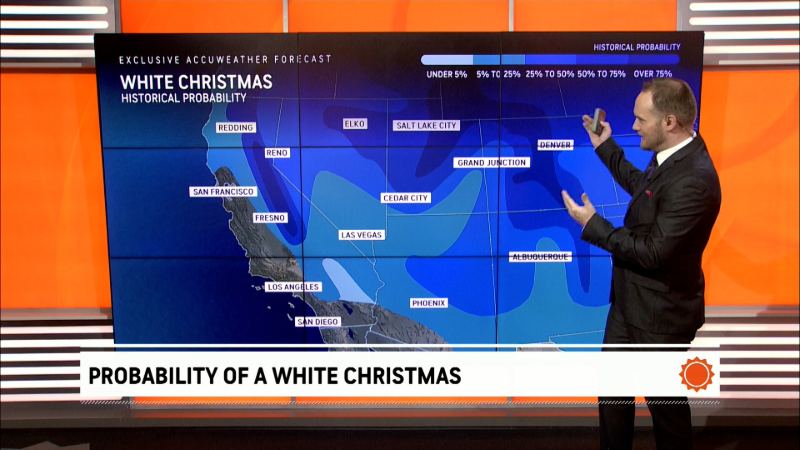What are your odds of seeing a white Christmas? Here are the likeliest places for snow

While the forecast for this year's white Christmas is still being refined, those of you in search of this ultimate holiday decoration may want to begin the trek west, or north.
Because if you're looking for a near-surefire way to get a white Christmas, you might want to head to Fairbanks, Alaska, which has seen snow on the ground practically every Christmas since weather record keeping began, according to data from the National Oceanic and Atmospheric Administration (NOAA).
And this year is no exception, as the city had over two feet of snow on the ground as of Monday morning Dec. 16, 2024, the National Weather Service said.
But what if Alaska is a bit too far from home? What about locations a bit closer to home?
White Christmas odds in the Lower 48
In the Lower 48, here's typically where you should go if you want a white Christmas: Minnesota, Maine, upstate and western New York, the Allegheny Mountains of Pennsylvania and West Virginia, practically anywhere in Idaho and, of course, the Rockies or the Sierra Nevada Mountains, NOAA said.
Historically, much of northern Minnesota and Wisconsin, most of Michigan's Upper Peninsula and a large portion of the Western mountain areas have a 90% or better chance of a white Christmas. Cities such as Marquette, Michigan, or International Falls, Minnesota, have had snow on the ground almost every Christmas since weather record-keeping began, according to NOAA.
This year, as of Monday, Marquette had 7 inches of snow while International Falls had a foot, so both are good bets.
Some of the biggest cities with the best probability for a white Christmas, based on historical averages, include Minneapolis, Green Bay, Buffalo, and Burlington, Vermont, according to AccuWeather.
As of Monday, Buffalo has one inch on the ground from the recent round of lake-effect snow events. Minneapolis had a trace, while Green Bay and Burlington were seeing bare ground, based on weather service data from Monday morning.
Map shows historical probability of a white Christmas
According to NOAA, "while the map shows the climatological probability of snow-covered ground on December 25, the actual conditions this year may vary widely from these probabilities because the weather patterns present will determine if there is snow on the ground or if snow will fall on Christmas Day.
"These probabilities are useful as a guide only to show where snow on the ground is more likely," NOAA said.
What is a white Christmas?
It need not snow Dec. 25 to fit the weather service's definition of a white Christmas: There just needs to be at least 1 inch of snow on the ground. A trace of snow also doesn't count, Weather.com reported.
On average, about 38% of the Lower 48 has an inch of snow on the ground on Christmas Day, according to 21 years of data compiled by NOAA.
Since 2003, those percentages have varied widely from year to year, from only 17.6% last year to a whopping 63% of the contiguous U.S. in 2009, Weather.com said.
Blame Bing?
The USA's fascination with a white Christmas dates at least to 1942, when Bing Crosby crooned the wistful song in the film "Holiday Inn." Written by Irving Berlin, the song's lyrics bring out a romanticized image of Christmases past, "just like the ones I used to know."
A second movie – White Christmas, also with Crosby – came out in 1954.
Going even further back, scholars say that the fascination can be traced to a swirling blizzard of nostalgia, music, popular literature, the rise of Victorian mass culture ‒ and even the Little Ice Age.